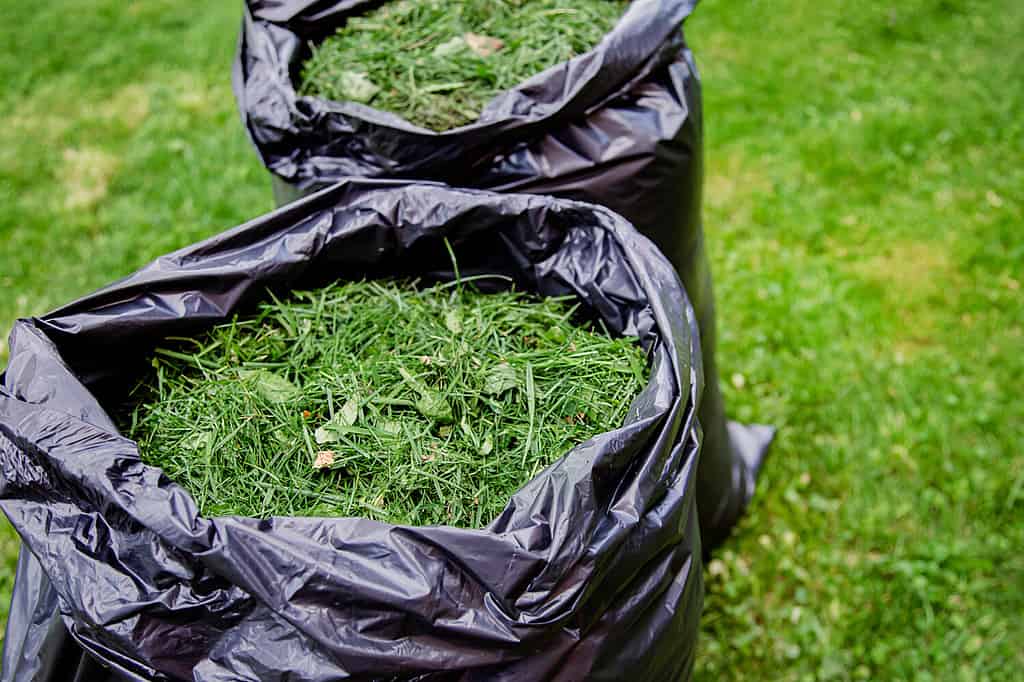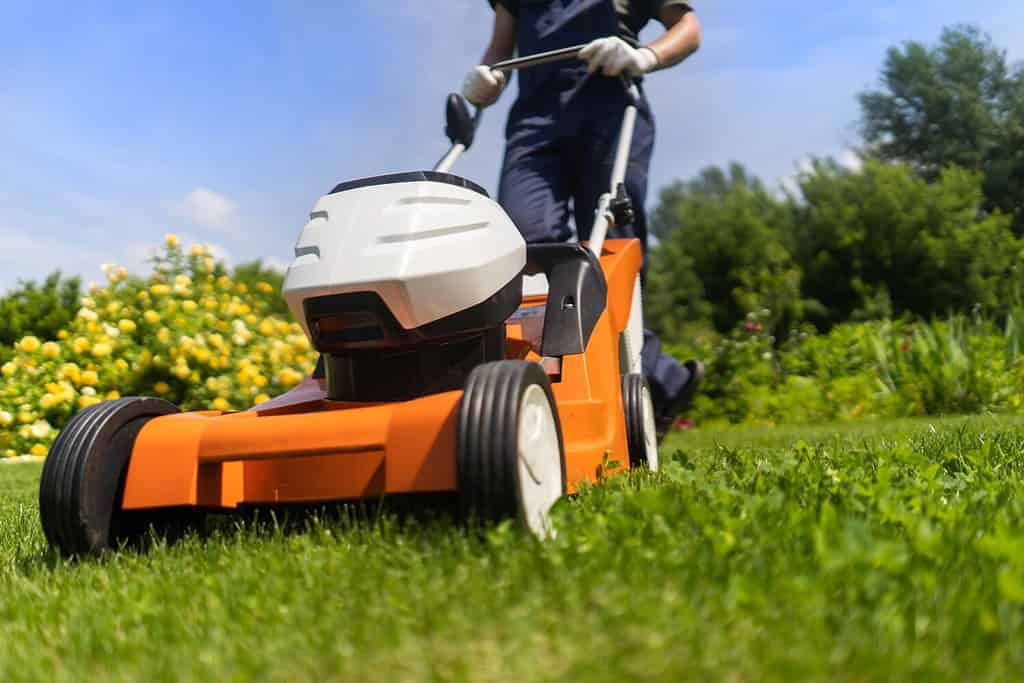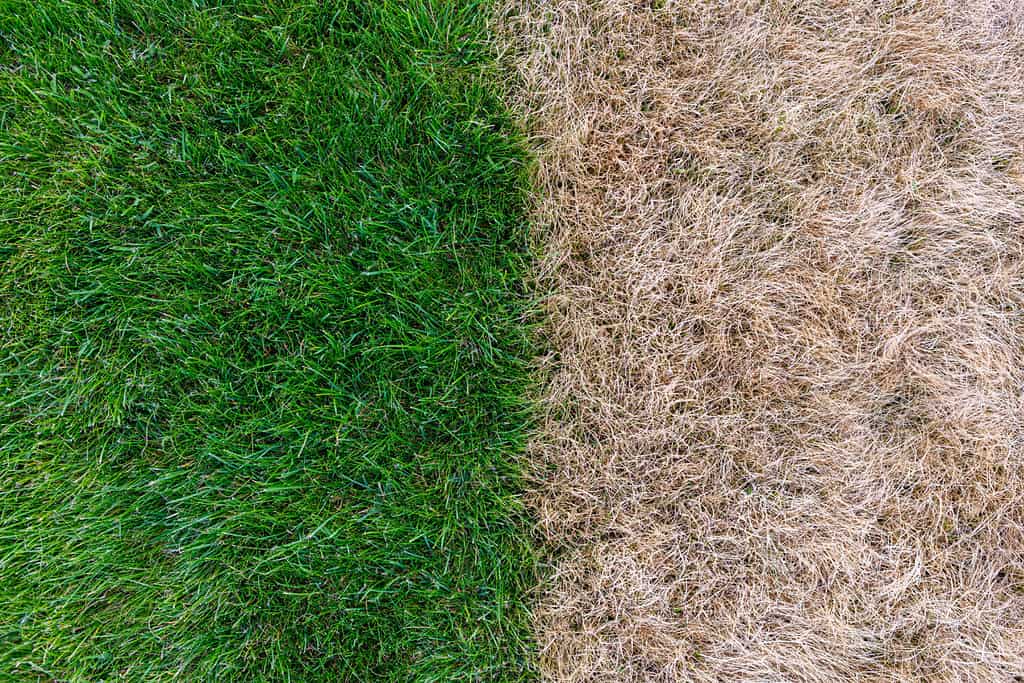A lush, vibrant lawn is the pride of any homeowner, but achieving and maintaining the vibrant green carpet requires more than just regular watering and mowing. Dethatching is an often overlooked yet critical process that can make all the difference in the health and beauty of your turfgrass. Discover the best time of year to dethatch your lawn for optimal growth. Timing is key, and getting it right can mean the difference between a lackluster lawn and one that’s the envy of the neighborhood.
What Is Dethatching?
Dethatching is the process of removing accumulated thatch from your lawn’s surface. Thatch is a dense layer of dead grass, roots, and other organic matter that builds up over time, creating a spongy, impenetrable barrier between the soil and your growing grass. While some thatch is a natural part of a healthy lawn ecosystem, excessive buildup is harmful.
Excessive thatch hinders grass growth by forming a barrier that prevents water and nutrients from reaching the roots. Eventually, this leads to shallow root systems, making your lawn susceptible to drought stresses and other environmental challenges. Furthermore, the thatch layer provides a habitat for pests and diseases.
Dethatching enhances nutrient absorption, improves air circulation, prevents disease, and ensures optimal grass growth.

Remove thatch clippings immediately to reduce disease, fungus, and pests.
©EsfilPla/Shutterstock.com
Best Time of Year to Dethatch Your Lawn
Determining the optimal time for dethatching depends on various factors, including your region and climate. However, as a general guideline, the two most suitable seasons for dethatching are spring and fall. Let’s break down the time for different regions and climates:
Spring Dethatching
Experts recommend spring dethatching for homeowners in the Northern and Transition Zone regions. Aim to dethatch your lawn when the soil temperature reaches 55 to 65 degrees Fahrenheit. Spring is a period of active growth for your grass, and dethatching in early spring allows your lawn to recover quickly by taking advantage of the favorable growing conditions.
As your soil warms, grassroots become more active. Furthermore, the warm soil creates an ideal time for your grass roots to grow deeper after dethatching. Dethatching in spring minimizes the stress on your grass compared to other seasons in these zones.
Fall Dethatching
Dethatching in the fall takes place in September or early October, and experts recommend the fall lawn treatment for homeowners in southern regions. Dethatching in the fall helps your lawn prepare for the upcoming winter. It reduces your risk of snow mold or other winter-related issues by allowing better air circulation.
Early fall provides cooler temperatures that are gentler on your grass during the recovery process. Additionally, weeds are less active in the fall, reducing competition for your grass as it recovers.
Avoid Summer and Winter Dethatching
Never dethatch your lawn during extreme weather conditions. Dethatching during the hot summer months stresses your turfgrass and increases your risk of heat damage. On the other hand, dethatching during the winter when the ground is frozen harms your grass and leads to shallow roots.
Other Factors to Consider
While the largest influencing factors are your region and climate, it is crucial to consider other factors that influence the timing of your dethatching.
Grass Type
Different grass species have varying growth patterns and requirements that affect the timing of dethatching.
- Cool-season grasses: Grasses like Kentucky bluegrass, fescue, and perennial ryegrass are common in northern regions of the U.S. They benefit from dethatching in early spring or early fall when they are actively growing.
- Warm-season grasses: Varieties like Bermuda grass, zoysia grass, buffalo grass, and St. Augustine grass thrive in southern regions with hot summers. For these grasses, late spring is more suitable for dethatching.
- Transition Zone grasses: In regions with mixed climates, like the Transition Zone, you need to consider the specific grass type in your lawn and adjust your timing.
Weather
Local climate and weather conditions play a significant role in determining when to dethatch your lawn.
- Rainfall: Choose a time when the soil is not too wet to avoid soil compaction during dethatching.
- Drought: In areas prone to drought, like Texas, dethatch in the spring to improve water penetration and retention.
- Temperature extremes: Never dethatch during periods of extreme heat or cold. Choose milder, more temperate periods like spring and fall.
Lawn History and Condition
Consider the history and condition of your lawn when deciding the best time to dethatch.
- New lawns: Newly established lawns may not require dethatching in the early years. Wait until the grass matures and the thatch later becomes noticeable.
- Maintenance history: Homeowners using a consistent lawn maintenance schedule, Including aerating and dethatching, do not need to dethatch as frequently.
- Thatch depth: Monitor the thickness of your thatch layer. If it exceeds one-half inch, it is time to dethatch.

Regular lawn maintenance reduces thatch buildup.
©africa_pink/Shutterstock.com
Benefits of Dethatching
Dethatching offers several benefits for achieving a healthier, more vibrant lawn, including:
Improves Air Circulation
Thatch is a dense layer of dead grass, roots, and organic matter that sits between the soil and your grass blades. The layer impedes airflow into your soil, and dethatching removes these barriers, allowing oxygen to reach your grass roots.
Adequate oxygen in the soil is essential for the respiration of grassroots and beneficial soil microorganisms. Improved circulation encourages healthier soil, which promotes lawn health.
Enhances Nutrient Absorption
Thatch also impedes the absorption of essential nutrients. When the layer is too thick, it traps nutrients on the surface, preventing them from penetrating the soil and reaching the roots.
Dethatching allows nutrients and fertilizers or organic matter to penetrate the soil. This ensures your lawn receives the nourishment it needs for robust growth and a lush appearance.
Promotes Deeper Roots
Thatch prevents grass roots from penetrating deep into the soil. Shallow root systems make your lawn more susceptible to drought stress and other environmental challenges.
Dethatching allows grass roots to grow deeper, seeking moisture and nutrients further below the surface. Deep-rooted grass is better equipped to withstand periods of drought and recover more effectively from wear and tear.
Reduces Pest and Disease Risk
Thatch creates a sheltered environment for pests and disease, providing them with an ideal habitat to thrive. By eliminating excessive thatch, you reduce the favorable conditions for pests and diseases, helping to keep your lawn healthier and more resilient.
Improves Aesthetics
Dethatching leads to a more visually appealing lawn. A thatchy lawn appears uneven and patchy, while dethatching results in a smoother, more uniform surface. A well-groomed lawn enhances your property’s curb appeal but also provides a pleasant outdoor space for recreation and relaxation.

Dethatching enhances the color of your turfgrass.
©Sergey Gerashchenko/Shutterstock.com
How to Dethatch Your Lawn
Dethatching your lawn is a vital step for your lawn’s health that uses a few simple tools. Discover the key steps and tools for effective dethatching:
Tools
- Dethatching machine or rake
- Lawnmower
- Leaf blower
- Garden hose with sprinkler attachment
Steps
- Prepare your lawn: Water your lawn the day before dethatching. Additionally, mow your grass to the recommended height for your grass type.
- Dethatch: Use a dethatcher machine or rake to pass over your lawn in overlapping rows.
- Collect debris: Gather the grass clippings with a leaf blower. Compost or dispose of the debris.
- Post-dethatching care: Water your lawn and consider overseeding thin areas.
- Maintenance: Prevent thatch buildup with regular lawn maintenance.
Dethatching Precautions and Tips
Dethatching is essential for lawn health, but it requires care to prevent damage. Follow these precautions and tips for a successful dethatching process.
Precautions
- Only dethatch if your thatch layer exceeds one-half inch.
- Dethatch during the recommended season for your region and grass type.
- Avoid dethatching during extreme heat or cold.
- Water your lawn before dethatching.
Tips
- Overlap passes with your dethatching machine or rake.
- Gather thatch debris immediately to prevent it from smothering your lawn.
- Adjust your dethatching machine to the correct depth for your grass type.
- Aerate your lawn after dethatching.
- Overseed thin areas.
Signs Your Lawn Needs Dethatching
If your lawn exhibits spongy or uneven terrain, has difficulty absorbing water or nutrients or shows signs of increased pest or disease issues, these are common indicators that your lawn may benefit from dethatching. Examine a small soil plug to check for a thatch problem. If you find a layer that is more than one-half inch thick between the grass blades and the soil, it is time to dethatch your lawn to promote optimal health and growth.
Wrapping Up: The Importance of Timing for Dethatching
Dethatching promotes optimal growth, providing benefits like improved air circulation, better nutrient absorption, and enhanced root growth. Understanding the factors that influence the timing of dethatching is crucial because proper timing ensures that your lawn remains healthy.
Thank you for reading! Have some feedback for us? Contact the AZ Animals editorial team.








